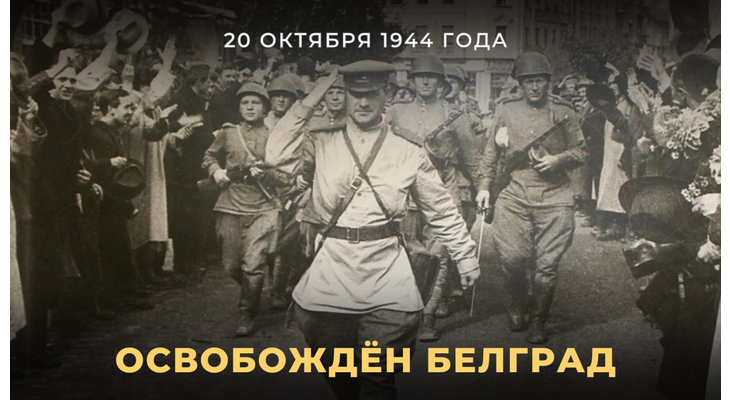On October 20, the 80th anniversary of the liberation of Serbia's capital, Belgrade, from Nazi German occupiers during the Great Patriotic War is commemorated.
On this day in 1944, the forces of the Red Army, during the Belgrade Offensive Operation by the 2nd and 3rd Ukrainian Fronts, together with units of the People's Liberation Army of Yugoslavia (NLAY), liberated the city from Nazi occupiers.
The operation to liberate Belgrade began on October 14. On that day, Soviet and Yugoslav forces, following heavy artillery preparation, broke through the outer defensive ring of the Nazis.
The battles for the city were intense and protracted. The total number of Wehrmacht occupation forces across Yugoslavia, including local collaborators, was about 570,000 people, of which 150,000 were engaged directly in the Belgrade sector. The Nazis and their collaborators had at their disposal 2,000 artillery guns and mortars, 125 tanks and self-propelled guns, and about 350 aircraft.
On October 20, the resistance of the Nazi garrison in Belgrade was finally broken, and the city was liberated.
As a result of the Belgrade Offensive, the capital of Yugoslavia, as well as the northeastern and eastern regions of the country, were freed from Nazi German occupation. The enemy lost up to 45,000 men killed and captured, 53 tanks and assault guns, 184 field guns and mortars, and 66 combat aircraft.
The success of the Red Army and NLAY ensured the restoration of Yugoslavia's sovereignty.
The liberation of Belgrade allowed Yugoslav forces, with military-technical support from the USSR, to expel the Nazi occupiers from the western regions of Yugoslavia, and the forces of the 3rd Ukrainian Front to continue their victorious advance toward Budapest.
According to the decree of the Presidium of the Supreme Soviet of the USSR on June 9, 1945, the medal "For the Liberation of Belgrade" was established. Twenty of the most distinguished units and formations were awarded the honorary title of "Belgrade."









